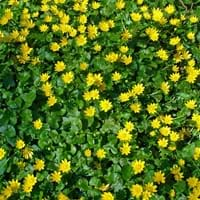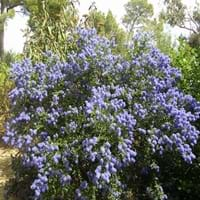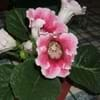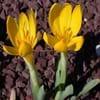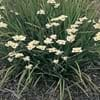Life Span
Perennial
Perennial
Type
Bulb or Corm or Tuber
Shrub
Origin
Europe, Russia/Siberia, Northern Africa, Western Asia
Hybrid origin
Types
buttercup
Not Available
Number of Varieties
Not Available
Habitat
meadows, Shady Edge, Woodland Garden Dappled Shade
Coastal Mountains, Coastal Regions, Hillside, Open Forest, Rocky areas
USDA Hardiness Zone
Not Available
5-8
Sunset Zone
21,22
5, 6, 7, 8, 9, 14, 15, 16, 17, 18, 19, 20, 21, 22, 23, 24
Habit
Clump-Forming
Cushion/Mound-forming
Flower Color
White, Yellow, Red, Green
Pink, Light Pink
Flower Color Modifier
Bicolor
Not Available
Fruit Color
Not Available
Hot Pink
Leaf Color in Spring
Not Available
Dark Green
Leaf Color in Summer
Light Green
Dark Green
Leaf Color in Fall
Several shades of Green
Dark Green
Leaf Color in Winter
Light Green
Not Available
Leaf Shape
Heart-shaped
Oval
Plant Season
Spring
Summer
Sunlight
Partial Sun, Partial shade
Full Sun, Partial Sun, Partial shade
Type of Soil
Loam, Sand
Loam
The pH of Soil
Acidic, Neutral
Acidic, Neutral, Alkaline
Soil Drainage
Well drained
Well drained
Bloom Time
Not Available
Late Spring, Early Summer, Early Fall
Tolerances
Drought
Drought
Where to Plant?
Container, Ground
Ground, Pot
How to Plant?
Divison, reseeds
Seedlings, Stem Planting
Plant Maintenance
Medium
Medium
Watering Requirements
Average Water Needs
Average Water Needs, Do Not over Water, Never Over-water, Water Deeply
In Summer
Lots of watering
Lots of watering
In Spring
Moderate
Moderate
In Winter
Average Water
Average Water
Soil pH
Acidic, Neutral
Acidic, Neutral, Alkaline
Soil Type
Loam, Sand
Loam
Soil Drainage Capacity
Well drained
Well drained
Sun Exposure
Partial Sun, Partial shade
Full Sun, Partial Sun, Partial shade
Pruning
Remove damaged leaves, Remove dead branches, Remove dead leaves
Remove damaged leaves, Remove dead branches, Remove dead leaves
Fertilizers
All-Purpose Liquid Fertilizer
All-Purpose Liquid Fertilizer
Pests and Diseases
Red blotch
Red blotch
Plant Tolerance
Drought
Drought
Flower Petal Number
Not Available
Single
Foliage Texture
Not Available
Medium
Foliage Sheen
Not Available
Glossy
Attracts
Ants, Insects
Butterflies
Allergy
Not Available
Asthma, breathing problems
Aesthetic Uses
Showy Purposes
Beautification, Bouquets, Landscape Designing, Showy Purposes
Beauty Benefits
Not Available
Not Available
Environmental Uses
Air purification
Air purification, Food for animals, Prevent Soil Erosion
Medicinal Uses
Antirheumatic, Astringent, Vitamin C
Diarrhea, Inflammation, Jaundice
Part of Plant Used
Leaves, Root
Flowers
Other Uses
Cleanser
Can be made into a herbal tea
Used As Indoor Plant
Not Available
No
Used As Outdoor Plant
Yes
Yes
Garden Design
Mixed Border, Wildflower
Container, Feature Plant, Foundation, Mixed Border, Rock Garden, Wall, Topiary, Bonsai, Espalier
Botanical Name
Ranunculus ficaria
CEANOTHUS x pallidus
Common Name
Figwort, Lesser Celandine
Wild lilac
In Hindi
Lesser Celandine
Ceanothus
In German
Scharbockskraut
Ceanothus
In French
Ficaire
Ceanothus
In Spanish
celidonia menor
Ceanothus
In Greek
Lesser Celandine
Ceanothus
In Portuguese
Lesser Celandine
Ceanothus
In Polish
Ziarnopłon wiosenny
Ceanothus
In Latin
Pavasara mazpurenīte
Ceanothus
Phylum
Magnoliophyta
Magnoliophyta
Class
Magnoliopsida
Magnoliopsida
Order
Ranunculales
Rosales
Family
Ranunculaceae
Rhamnaceae
Clade
Angiosperms, Eudicots
Angiosperms, Eudicots
Tribe
Not Available
Not Available
Subfamily
Not Available
Not Available
Importance of Lesser Celandine and Ceanothus
Want to have the most appropriate plant for your garden? You might want to know the importance of Lesser Celandine and Ceanothus. Basically, these two plants vary in many aspects. Compare Lesser Celandine and Ceanothus as they differ in many characteristics such as their life, care, benefits, facts, etc. Every gardener must at least have the slightest clue about the plants he wants to plant in his garden. Compare their benefits, which differ in many ways like facts and uses. The medicinal use of Lesser Celandine is Antirheumatic, Astringent and Vitamin C whereas of Ceanothus is Diarrhea, Inflammation and Jaundice. Lesser Celandine has beauty benefits as follows: Not Available while Ceanothus has beauty benefits as follows: Not Available.
Compare Facts of Lesser Celandine vs Ceanothus
How to choose the best garden plant for your garden depending upon its facts? Here garden plant comparison will help you to solve this query. Compare the facts of Lesser Celandine vs Ceanothus and know which one to choose. As garden plants have benefits and other uses, allergy is also a major drawback of plants for some people. Allergic reactions of Lesser Celandine are Not Available whereas of Ceanothus have Asthma and breathing problems respectively. Having a fruit bearing plant in your garden can be a plus point of your garden. Lesser Celandine has no showy fruits and Ceanothus has no showy fruits. Also Lesser Celandine is not flowering and Ceanothus is not flowering . You can compare Lesser Celandine and Ceanothus facts and facts of other plants too.
